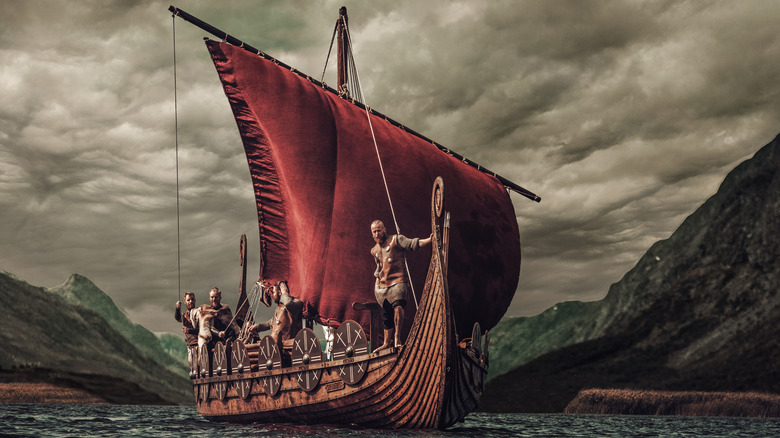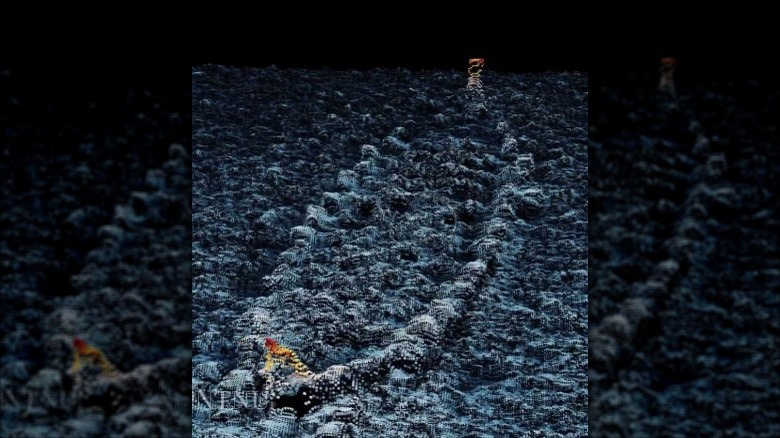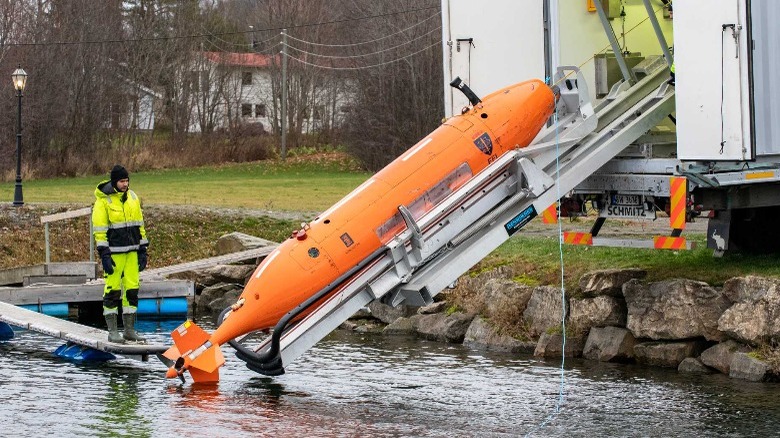The Shipwreck Frozen In Time In A Norwegian Lake
According to the National Ocean Service, more than 80% of the ocean is unmapped. With that much space untouched by adventurers and scientists alike, who knows what kind of untold treasures, shipwrecks, and creatures are waiting to be found? Stories of brave explorers and warriors who traversed the seas in search of glory, artifacts of societies past, and ancient ruins are all buried in the murky depths. So it probably comes as no surprise that many of Earth's lakes and other large bodies of water are left largely unexplored.
When picturing great warriors who are off pillaging far-off lands, you usually imagine them as seafaring fellows. But many traveled by lake, waterway, and river — including Vikings, who used the largest lake in Norway, Lake Mjøsa (via Britannica), for battle and to access goods (via ScienceNorway.no). Now that lake is a memorial and an unmarked grave for many lost souls.
The Ship
As mentioned, Mjøsa is the largest lake in Norway at 62 miles long and a range of 1 to 9 miles wide (via Britannica). It is long and narrow, covering an area of around 142 square miles. It's a whopping 1,473 feet or nearly 150 meters at its deepest point. Covering such a vast region, scientists were not terribly surprised to find a Norse vessel nestled on the floors of its depths (via ScienceNorway.no).
The ship, which is about 33 feet long and was possibly a bit longer before time's wear and tear, is believed the have sunk anywhere from the 14th to 19th centuries. There are two clues that led researchers to this conclusion: The way it was built and the deterioration its seen over time. It was built using "clinker construction," an ancient Norse technique that involved overlapping planks so the ship would be lighter yet stronger (via CNN). Additionally, underwater sonar imaging showed the stern of the ship could have had a central rudder, which wouldn't have been the case if it was built before that timeframe.
The Project
The researchers credited with the discovery were not surprised with their findings, as they expected to find plenty of ships at the bottom of Lake Mjøsa (via ScienceNorway.no). Its surrounding areas were wealthy, filled with farms and access to goods, which made the lake a hot spot for transportation. Because of this, it was also the site for countless historic naval battles involving Vikings. Not only does it harbor living history, but it also protects it. Due to the nature of fresh water and lack of waves, the ship stayed in much better condition than if it were in the ocean. This indicates that there may be other ships that are likely at the bottom of Lake Mjøsa waiting to be found (via CNN).
In recent years, an unknown amount of munitions have been dumped in Mjøsa, posing a health risk for the over 100,000 Norwegians that depend on the lake for drinking water. Because of this, The Norwegian Environment Agency called upon the Norwegian Defense Research Establishment (NDRE) to chart the 140-meter lake bed — during which they found the ship (per ScienceNorway.no). NDRE hopes to eventually raise the wreck or gather more data and images using underwater sonar technology.


